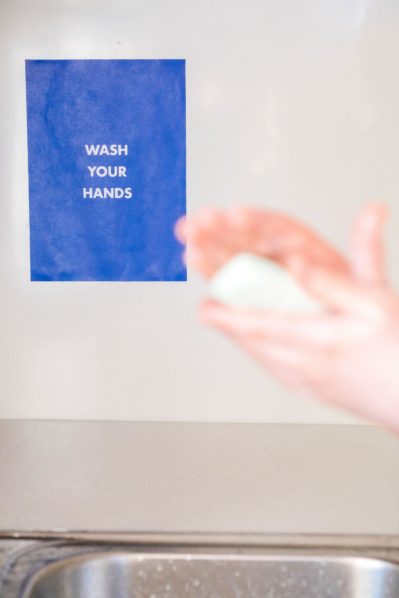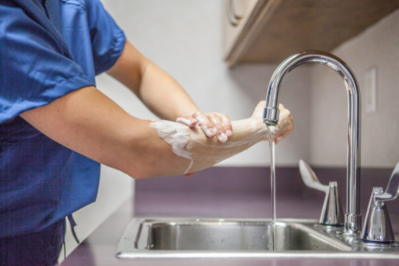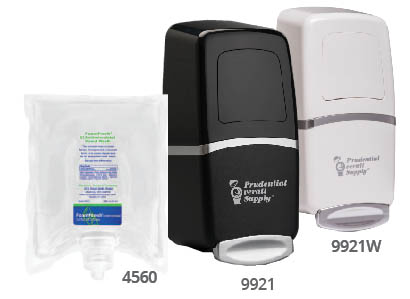Hand Soap vs. Hand Sanitizer: Which Is Best for Your Employees?

Washing your hands with soap and water kills germs, removes chemicals, and prevents the spread of viruses, but not everyone has access to soap and water throughout the day. Hand sanitizers with at least 60% alcohol are effective at killing many germs. While not a replacement for ordinary soap, they certainly eliminate some germs and at least reduce the growth of many organic pathogens. Here, we’ll provide a look at the pros of hand sanitizer vs. soap and when to use one or the other.
Is Using Soap or Hand Sanitizer Better?
Washing with soap and water or applying hand sanitizer are both good hygiene and cleanliness practices. Both have their advantages, and we’ll explain the pros of each below:
Hand Soap Pros
Hand soap can be used in a wide range of applications. It’s most effective when you wash thoroughly for at least 20 seconds, as recommended by the Centers for Disease Control and Prevention. Washing with soap comes with the following pros:
- Soap molecules destroy the surface membranes of many bacteria and viruses.
- Lathering and scrubbing create friction that lifts and washes away microbes, dirt, and grease.
- Soap removes germs, chemicals, pesticides, heavy metals, and more.
- Plain soap has strong antibacterial properties.
- Hand soap does not expire; it’s effective as long as it lathers.
Handwashing removes all the germs, dirt, and muck that have collected on your hands throughout the day. It requires soap and warm water. However, the water doesn’t necessarily need to be at any particular temperature. Remember to use a paper towel to touch faucets and door handles, as doing so with freshly washed hands can recontaminate them.
Sanitizer Pros
Hand sanitizer is primarily intended for killing germs on your hands while you’re on the go. It is regulated by the U.S. Food and Drug Administration. As long as the product has not expired, the alcohol in the sanitizer will be effective. Some benefits of alcohol-based hand sanitizers are they:
- Require less time to use and are more accessible.
- Inactivate many kinds of microbes when used correctly and in sufficient quantities.
- Are effective when you apply the sanitizer to the palm of one hand, and cover all surfaces of both hands (rub your hands together until they are dry).
- Can prevent the transmission of germs from door handles, doorknobs, computer keyboards, and other high-touch surfaces.
- Slow the spread of germs in conference/meeting rooms, cafeterias, break rooms, workstations, and transaction counters, as well as in clinical settings.
Hand sanitizers can also be less irritating to the skin (some even have moisturizing and other beneficial properties). Ethanol-based products are safe to use as well, so long as guidelines for avoiding swallowing them are followed (doing so can lead to alcohol poisoning).
Also, remember to use enough sanitizer to cover your hands and not wipe it off before it is dry. Otherwise, it might not eliminate certain types of germs that can cause serious illness.
When to Use Hand Sanitizer vs. Soap and Water

Hand sanitizer is effective when a sink and hand soap are not available. Best of all, it can be used whenever you need it. Some sanitizer containers are small enough to fit in your pocket, so you can use them whenever you touch a potential contaminated surface. Workplaces and facilities such as day care centers, nursing homes, and schools are also placing them in key areas so, for example, you can sanitize throughout the day.
Wash your hands before and after preparing food, eating, treating a cut or wound, or caring for someone who is sick. Always wash with soap and water after using the bathroom, changing diapers, blowing your nose, coughing or sneezing, touching an animal or its waste, touching garbage, or when your hands are visibly dirty.
The best times to sanitize or wash your hands include before and after work, before or after a break, and after using the restroom. It also helps to use signs and posters to remind people to wash their hands. These are best placed in bathroom and kitchen areas to help promote best practices. In addition to washing and sanitizing, other steps to protect employees and customers include:
- Providing foot pedal trash cans, automatic hand dryers, and other no-touch fixtures.
- Frequently cleaning high-touch surfaces like handrails, doorknobs, and countertops.
- Instructing employees to stay home until they are no longer ill or have symptoms.
Promote the Use of Both Options

You should educate your cleaning staff and employees on the benefits of both soap and hand sanitizers. When selecting products, choose based on effectiveness and usefulness over cost. The cost-per-use factor is important, especially for brands that offer more for less. For example, some soaps may be more effective in smaller quantities, so a single container may yield a greater number of uses. Hand sanitizers available as foams or misting sprays can achieve the same effect.
Nonetheless, making both options readily available gives people in your facility a chance to maintain their hygiene on a regular basis.
Order Soap, Sanitizer, and Paper Products from Prudential Overall Supply
The hand sanitizer vs. soap debate may be ongoing in your workplace. Do you continue to ask “Which is better: soap and water or hand sanitizers?” We offer a full line of hand care cleaning products to meet your needs. At Prudential Overall Supply, you’ll find hand soaps, soap dispensers, tissues, soap stands, foam hand wash and sanitizers, and various models of paper towels/dispensers. To get started, request a quote from the desired product page. You can also view additional product details and safety data sheets. Feel free to contact us on the web or call 800-767-5536 for more information.